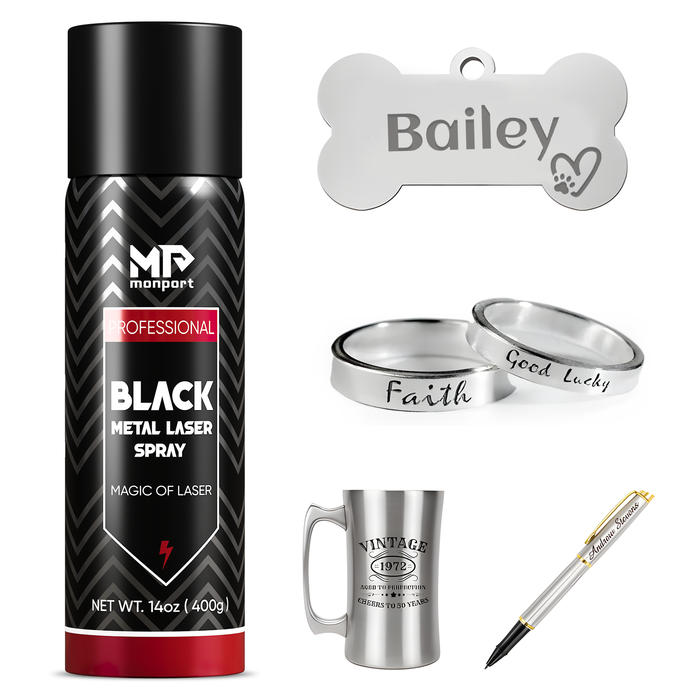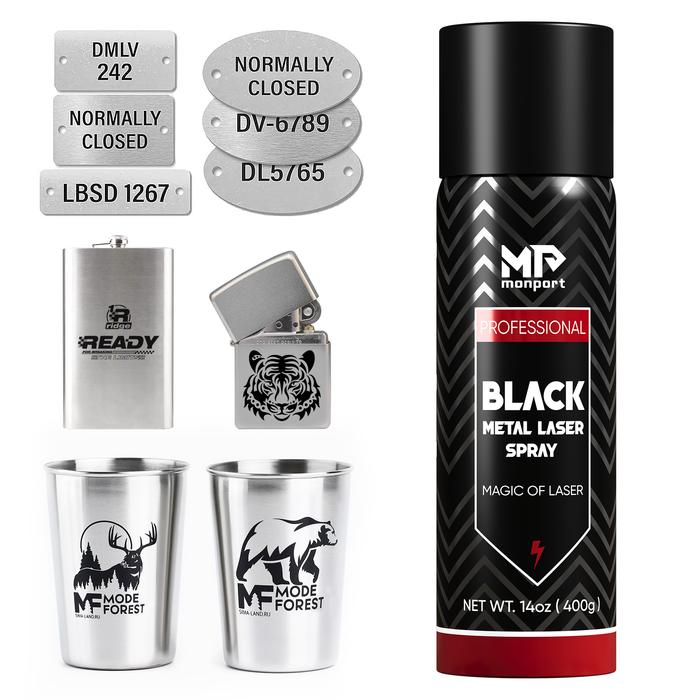As winter approaches and temperatures drop, operating a CO2 laser engraving and cutting machine in low-temperature environments requires extra attention and care, especially when using black laser marking spray to ensure optimal contrast and quality in your engravings.Proper CO2 laser maintenance can extend the machine's lifespan and ensure precise and efficient engraving. Below are essential winter laser engraving maintenance tips and guidelines for adding antifreeze.
1. Environmental Temperature Control
Ideal Operating Temperature
- The optimal working temperature for a CO2 laser engraving and cutting machine is between 15°C and 30°C.
- During colder months, place the machine in a heated, stable indoor environment, away from doors and windows where cold drafts may enter.
- If indoor heating isn’t available, use a space heater to maintain a suitable temperature around the machine, preventing damage to electronic components and the optical system caused by cold conditions.
Avoid Temperature Fluctuations
-
Avoid sudden temperature changes. For example, after moving the CO2 laser engraving and cutting machine from a cold outdoor environment to a warm indoor space, let it sit for 1–2 hours before powering it on to allow temperature stabilization. This prevents damage caused by thermal expansion or contraction. Additionally, when using black laser marking spray, it's important to ensure that the material has acclimated to the temperature to achieve the best results without compromising the spray's effectiveness.

Prevent Condensation
- Significant indoor-outdoor temperature differences may cause condensation on the machine. Condensation can short-circuit electronics or blur optical lenses.
- If condensation occurs, gently wipe it off with a clean, soft cloth and wait until it completely disappears before using the machine.
2. Optical System - CO2 Laser Maintenance
- Low temperatures can cause lens frosting, reducing laser transmission efficiency and engraving precision.
- Regularly inspect and clean the lenses using specialized optical lens cleaning paper and solution. Gently wipe the lens surface to remove dust and debris.

Cooling System Check
- Inspect water pipes and the cooling tank for leaks or ice formation. Replace aging or damaged pipes immediately.
- Ensure the cooling liquid is sufficient and circulates normally.
3. Mechanical Components for CO2 Laser Maintenance
- Cold weather increases the viscosity of lubricants, affecting smooth mechanical operation of your CO2 laser engraving machine.
- Thoroughly clean guide rails, lead screws, and other moving parts before applying low-temperature-resistant lubricants. This reduces friction and wear, ensuring stable operation.
- Check the tension of transmission belts when doing CO2 Laser maintenance. Adjust or replace them if they are too loose or too tight, as improper tension can affect engraving precision.
4. Cooling System - CO2 Laser Maintenance
Cooling Liquid Check
- Inspect the cooling system’s liquid at least once a month.
- Turn off the power, open the cooling tank cover, and check the liquid level and color. Add more liquid if levels are low. If the liquid appears dark or cloudy, it may be degraded and should be replaced.
Adding Antifreeze
- If antifreeze is needed, partially drain the cooling liquid to create space for the antifreeze.
- Mix the antifreeze with distilled water according to the product instructions (e.g., a 1:1–1:3 ratio). Slowly add the mixture to the cooling tank using a funnel. Stir thoroughly to ensure even mixing.
- After adding, run the cooling system for a few minutes to circulate the liquid, then recheck the liquid level.
Pipe Inspection
- Examine the cooling system’s pipes for leaks or blockages during CO2 laser maintenance. Look for signs of dripping liquid along the pipes and replace damaged pipes or seals promptly.
- Use compressed air to blow out any dust or debris in the pipes.
Additonal Notes for CO2 Laser Maintenance
| Annual Lowest Temperature in Your Region (°C) | Concentration (%) | Antifreeze (ml) | Purified Water (ml) |
|---|---|---|---|
| T > 0 | 0 | 0 | 1100 |
| -10 ≤ T ≤ 0 | 20 | 280 | 1120 |
| -20 ≤ T ≤ -10 | 35 | 490 | 910 |
| -30 ≤ T ≤ -20 | 45 | 630 | 770 |
| -40 ≤ T ≤ -30 | 50 | 700 | 700 |
| -50 ≤ T ≤ -40 | 60 | 840 | 560 |
Choosing the Right Antifreeze
-
Select reliable antifreeze compatible with the CO2 laser engraving machine. Avoid antifreeze containing corrosive components that may damage metal parts. When using black laser marking spray, ensure that it doesn't react negatively with any coolant or antifreeze used in the machine.
-
Consult MonPort customer support for recommendations. (MonPort-specific laser antifreeze is pre-diluted and ready to use; just clean the cooling system with distilled or deionized water before adding the coolant. It remains effective even at -31°F while efficiently dissipating excess heat.)
Prevent Freezing
- Ensure cooling liquid does not freeze in cold weather. Adjust the antifreeze ratio based on local minimum temperatures.
- If the CO2 laser engraving machine will remain unused for an extended period in low temperatures, consider draining the cooling system completely to prevent liquid from freezing and damaging components.
For other antifreeze brands, refer to the product manual for dilution ratios. When in doubt, consult the manufacturer’s guidelines for proper laser engraving and cutting machine maintenance.










